Health
Tackle your fussy eater
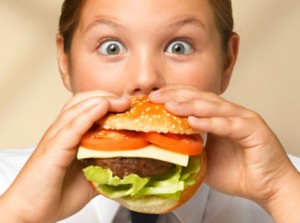 Life-style disorders are fast becoming a major cause for health related issues unhealthy eating habits, stress and lack of proper sleep has taken a toll even on our children. Our Nutrition expert Gayathri Ashokan advises on adopting and adapting to healthy life style to prevent life threatening ailments.
Life-style disorders are fast becoming a major cause for health related issues unhealthy eating habits, stress and lack of proper sleep has taken a toll even on our children. Our Nutrition expert Gayathri Ashokan advises on adopting and adapting to healthy life style to prevent life threatening ailments.
Breast-feeding is ideal nutrition and sufficient to support optimal growth and development for about the first 4–6 months after birth. Try to maintain breast-feeding for 12 months. Transition to other sources of nutrients should begin at about 4–6 months of age to ensure sufficient micro-nutrients in the diet.
 Delay introducing 100 percent juice until at least 6 months of age and limit to no more than 4–6 oz/day. Juice should only be fed from a cup.
Delay introducing 100 percent juice until at least 6 months of age and limit to no more than 4–6 oz/day. Juice should only be fed from a cup.
Don’t overfeed infants and young children they can usually self-regulate the amount of calories they need each day. Children shouldn’t be forced to finish meals if they aren’t hungry as they often vary caloric intake from meal to meal.
Introduce healthy foods and keep offering them if they’re initially refused. Don’t introduce foods without overall nutritional value simply to provide calories.
Only 20 per cent children age 6-23 months in India are fed appropriately according to all three recommended practices for infant and young child feeding.
70 per cent children age 6- 59 months are anaemic. Children of mothers who are severely anaemic are seven times as likely to be severely anaemic as children of mothers who are not anaemic.
Only half (51 per cent) of households use adequately iodized salt in India.
Morning in a hurry…. How do you make your child eat?
 Studies prove that healthy breakfast plays a major role in school activities and improves concentration. So 1/3 of the total calories should come from breakfast. Now there is the concept of food plate-which contains a portion of cereals, milk/curd, vegetables especially green leafy vegetables and fruits. But unfortunately most kids skip breakfast and 70% of pre-school children in our country is anaemic. To ensure that your child eats well in the morning, instead of making two or three Dosa or chapathi its better to make it big size, so that instead of counting numbers he / she would consume a better potion. To make it more nutritious you can add some multi grain mix, like soybean and bengal gram powder to the dough. If it’s difficult to make the child eat the breakfast one can also try some “navadanyapowder” mix with milk, which meets the requirement. A personal recipe I can share is sandwich filled with sprouted green gram with a pinch of pepper and ½ tsp sauce. It’s easy to prepare and healthy, as it gives enough protein. Make sure you use whole grain bread or wheat bread instead of white bread.
Studies prove that healthy breakfast plays a major role in school activities and improves concentration. So 1/3 of the total calories should come from breakfast. Now there is the concept of food plate-which contains a portion of cereals, milk/curd, vegetables especially green leafy vegetables and fruits. But unfortunately most kids skip breakfast and 70% of pre-school children in our country is anaemic. To ensure that your child eats well in the morning, instead of making two or three Dosa or chapathi its better to make it big size, so that instead of counting numbers he / she would consume a better potion. To make it more nutritious you can add some multi grain mix, like soybean and bengal gram powder to the dough. If it’s difficult to make the child eat the breakfast one can also try some “navadanyapowder” mix with milk, which meets the requirement. A personal recipe I can share is sandwich filled with sprouted green gram with a pinch of pepper and ½ tsp sauce. It’s easy to prepare and healthy, as it gives enough protein. Make sure you use whole grain bread or wheat bread instead of white bread.

Alternatives that can be given to children for lunch…..
Normally mothers give the same lunch prepared for adults to children. However, children may not get enough nutrients from this lunch because their intake is very less. Kids need daily 50 gm of vegetables and 50 gm of green leafy vegges, so I would suggest a simple recipe anyone can try at home. Cut carrot, beans and cabbage like the shape of finger chips and steam for 5 minutes. Then sprinkle it with a little pepper and salt. Kids really love it, as they like to bite big pieces than smaller ones and it’s attractive too. It can be given with two chapathis (we can mix leafy vegetables to dough) or with 200 gm rice (brown rice) and curd with a piece of fish/chicken (40 gm). Vegetable fried rice with corn, carrot, beans, and curd rice with boiled vegetables provide overall nutrients to the body. Rice along with raitha (mixed with carrot, onion, sprouted green gram, cucumber) is another healthy option. Prepare cutlets in different shapes with lots of green leaves, coriander leaves, chicken, onion etc. I t can be given with rice and curd. Once in a week we can try noodles mixed with vegetables, egg, milk can be used instead of water to make it nutritious.
What can be given as snacks for school going children?
Our traditional rice flakes and puffed rice are ideal, so we can make it like our ‘temple prasadam’ which give enough dry fruits, fiber and jaggery it contains minerals like iron, zinc etc. A handful of dry fruits and nuts can give enough protein, vitamin E, and other minerals. Boiled sweet corn mixed with a spoon of ghee is another option for snack, kids would love it and it’s very nutritious. Muesli, crushed wheat is also good can also provide enough fibre.
Illness caused due to consuming junk food and aerated drinks…..
 Your kid may demand for an icy aerated drink on a hot summer day, but never buy them the refreshing treat as it is a major health risk in disguise, loaded with sugar and devoid of nutrients it can give extra calories to put on weight. One tsp of sugar give 20kcal, 1tsp oil give 45kcal but one idly give only 50 kcal.
Your kid may demand for an icy aerated drink on a hot summer day, but never buy them the refreshing treat as it is a major health risk in disguise, loaded with sugar and devoid of nutrients it can give extra calories to put on weight. One tsp of sugar give 20kcal, 1tsp oil give 45kcal but one idly give only 50 kcal.
Studies prove that if more carbonated beverage is taken, it could lead to the degradation of bones. It can be experimented by putting a tooth to a bottle of black colored aerated drink. That will dissolve in one week. And liters of water are needed to wash out the residues from the stomach.
Water is an essential nutrient, which is needed daily. We lose about 1-1.5 liters of water daily especially in hot season that must be replaced. Soft drinks can never replace water that is needed to washout toxins from our body. One can replace soft drinks with lime juice, which contain vitamin C, that helps to resist infection. Also try our traditional drink like coconut water, buttermilk, which is packed with lot of nutrients.
 After effects of chewing gum……
After effects of chewing gum……
Saliva contains ptyalin, the enzyme for digesting starch. If we are using more of chewing gum it may results in secretion of other gastric juices which results in acidity or other digestive problems.
Food that causes allergies in children…..
 As told before, each and every child is different, the allergy may also differ. We should observe the child instead of predicting. Many Keralities have so many concepts like food fads and fallacies. Some kids have milk allergy, due to lactose. Other allergies like gluten allergy, sea food allergy, egg etc are also common; if one food is removed it should be replaced with another.
As told before, each and every child is different, the allergy may also differ. We should observe the child instead of predicting. Many Keralities have so many concepts like food fads and fallacies. Some kids have milk allergy, due to lactose. Other allergies like gluten allergy, sea food allergy, egg etc are also common; if one food is removed it should be replaced with another.
There is a common notion among us that children who are plump are healthy and thin means ill. One should understand that most important thing to see is that is the child healthy and is active. We should check the height and weight periodically and plan a proper diet plan with the help of a nutritionist. Some kids eat enough food but a lot of energy is lost when children are engaged in various activities. It is very important to create nutritional awareness among mothers and encourage them to choose healthy food. This can have a positive effect on the family. Cook your child’s favourite restaurant recipe home and make it healthier. Try new recipes and encourage your child to eat healthy, educate them and ensure your child’s participation while cooking, this will make them more health alert.
Cover Story
Incorporating Vitamin E into Your Diet: Delicious Fruit Options
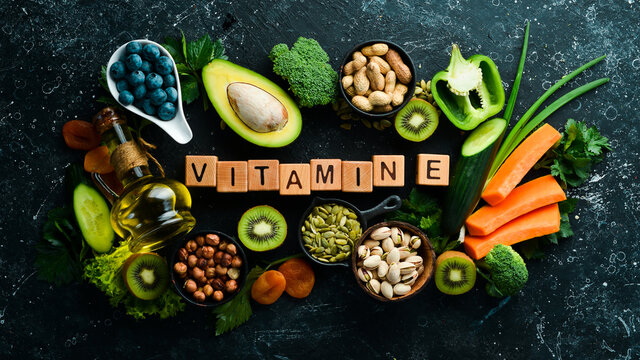
Vitamin E is a powerful antioxidant that plays a crucial role in maintaining healthy cells, boosting immunity, and protecting against oxidative stress. While it’s commonly found in nuts, seeds, and oils, did you know that several delicious fruits are also excellent sources of this essential nutrient? Let’s explore some mouthwatering fruit options that can help you meet your daily vitamin E needs while tantalizing your taste buds.

Avocado:
Often hailed as a superfood, avocados are not only creamy and delicious but also packed with nutrients, including vitamin E. Adding slices of ripe avocado to salads, sandwiches, or simply enjoying it on its own can provide a significant portion of your daily vitamin E intake.
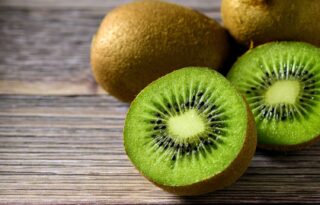
Kiwi:
Bursting with flavor and vibrant green hues, kiwis are not only rich in vitamin C but also contain a good amount of vitamin E. Enjoy them sliced over yogurt, blended into smoothies, or incorporated into fruit salads for a refreshing and nutritious treat.
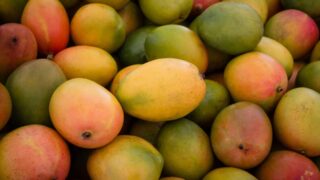
Mango:
Sweet, juicy, and tropical, mangoes are a delightful source of vitamin E. Whether enjoyed fresh, diced into salsas, or blended into creamy mango smoothies, these golden fruits offer a delicious way to boost your antioxidant intake.
Papaya: With its luscious orange flesh and sweet flavor, papaya is another fruit that’s brimming with vitamin E. Indulge in slices of fresh papaya as a standalone snack, blend it into tropical fruit juices, or add it to fruit platters for a dose of sunshine in every bite.
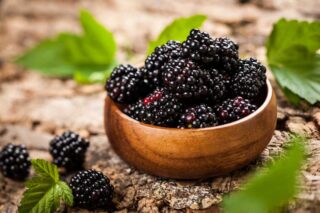
Blackberries: These small but mighty berries are not only bursting with flavor but also packed with vitamins and antioxidants, including vitamin E. Incorporate blackberries into your breakfast oatmeal, sprinkle them over yogurt, or enjoy them by the handful for a tasty and nutritious snack.
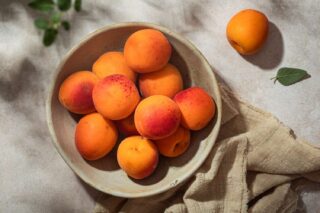
Apricots: Whether fresh or dried, apricots are a fantastic source of vitamin E. Snack on dried apricots for a convenient and portable boost of nutrients, or enjoy fresh apricot slices as a refreshing addition to salads and desserts.
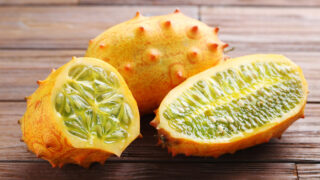
Kiwano (Horned Melon):This exotic fruit may look unusual with its spiky orange exterior, but its vibrant green flesh is not only visually striking but also rich in vitamin E. Kiwano can be enjoyed on its own or added to fruit salads for a unique and flavorful twist.
Incorporating vitamin E-rich fruits into your diet is not only delicious but also beneficial for your overall health and well-being. Whether you prefer the creamy texture of avocados, the tropical sweetness of mangoes, or the tangy bite of kiwis, there are plenty of delightful options to choose from. So why not add a splash of color and flavor to your meals and snacks with these nutrient-packed fruits?
Remember to enjoy a varied and balanced diet to ensure you’re getting all the essential nutrients your body needs for optimal health. With these tasty fruit options, boosting your vitamin E intake has never been more enjoyable!
Beauty
Rihanna’s Jaw-Dropping Maternity Shoot: Unveiling Goddess-Like Beauty and Baby Bump Glamour!

Rihanna, the iconic pop star, recently celebrated the beauty of her pregnant form by sharing a throwback maternity shoot on social media. Pregnancy is a transformative journey filled with mental, physical, emotional, and hormonal changes, and Rihanna wanted to showcase the goddess-like essence that comes with it. The captivating photo series, titled “Rub on ya titties,” features Rihanna in beach waves, adorned with body chains, and with her unborn child, affectionately referred to as Baby RZA, in her womb.

In a heartfelt caption accompanying the photos, Rihanna reflected on her first experience with pregnancy and impending motherhood as she prepares to welcome her second child with A$AP Rocky. She honored the magic of her body and the journey of embracing motherhood like a true warrior. She humorously acknowledged that Baby RZA has no idea about the vibrant personality of his mama or how deeply he would captivate her.
Beyond the sentimental message, Rihanna’s maternity shoot offered inspiration for achieving vacation-ready beauty. The photos showcased dewy, sun-kissed skin, accentuated by golden accessories. Long, boldly colored nails added instant glamour, even without a full ensemble. The effortlessly tousled texture, reminiscent of just-emerged-from-water locks, served as the go-to style for achieving a mermaid-inspired look. And to add a touch of Rihanna’s signature bad gal vibe, a swipe of peach lip gloss provided a warm, luxurious, and seemingly effortless finish—a perfect reflection of Rihanna’s approach to parenthood and life as a whole.

Rihanna’s throwback maternity shoot not only celebrated her own journey but also emphasized the beauty and power that pregnancy brings. It served as a reminder that embracing the changes and nurturing the divine creation within is a truly awe-inspiring experience.
Beauty
Why Priyanka Chopra’s Choice Can Energize and Strengthen Your Body

Priyanka Chopra, the renowned actress and global icon, leads a wholesome life when she’s not busy with events and commitments. Alongside her DIY skincare hacks, she engages in various fitness activities such as swimming, cycling, yoga, bodyweight exercises, and weightlifting. Swimming, in particular, holds a special place in her heart, as she finds it not only energizing but also mood-boosting. In this article, we explore the reasons why swimming is an excellent exercise for holistic well-being and why you should consider incorporating it into your fitness routine.
Swimming is a comprehensive workout that engages different muscle groups, providing extensive training for the body. It enhances strength, stamina, and cardiovascular fitness. Beyond the physical benefits, swimming also stimulates positive mental well-being. Research suggests that swimming can ease anxiety and depressive symptoms, promote a sense of well-being, and elevate mood and energy levels. By diving into the water, you dive into a pool of mental stimulation and rejuvenation.
One of the remarkable aspects of swimming is its low-impact nature. The buoyancy of water reduces stress on joints and minimizes the risk of impact-related injuries, making it an ideal exercise for people of all ages and fitness levels. Additionally, swimming can aid in rehabilitation after injuries, as it reduces stress on bones, joints, and connective tissues. Individuals with arthritis, joint pain, or those recovering from injuries can benefit greatly from swimming as part of their rehabilitation program.
Swimming serves as an excellent aerobic activity, providing a workout for the heart and lungs. Regular swimming trains the body to utilize oxygen more effectively, resulting in a decrease in resting heart rate and breathing rate. The muscles in the arms, legs, and core are all utilized during swimming, enhancing their power, flexibility, and endurance. Moreover, swimming can help lower blood pressure, reduce the risk of heart disease, and improve overall heart health.
Swimming is an effective calorie-burning exercise. A leisurely swim can burn around 500 calories per hour, while a more intense session could burn up to 700 calories. Not only does swimming burn calories, but it also helps build lean muscle, which boosts metabolism. By increasing your lean muscle mass, you increase your body’s calorie-burning potential. Therefore, swimming can be an excellent aid in weight loss or weight maintenance, while also improving overall metabolic rate.
Swimming promotes flexibility and joint mobility due to the range of motion required during swimming movements. The water’s supportiveness allows for stretching and loosening of muscles, which can enhance overall flexibility. Whether you want to improve your range of motion during other exercises or simply feel more agile in daily life, swimming is a great way to increase flexibility and improve joint mobility. Regular swimming can also enhance muscle endurance, contributing to improved overall fitness.
Following Priyanka Chopra’s footsteps, incorporating swimming into your fitness routine can provide numerous benefits for both your body and mind. Swimming offers a well-rounded approach to fitness, enhancing strength, stamina, cardiovascular fitness, and flexibility. It is a low-impact exercise suitable for people of all ages and fitness levels. Moreover, swimming aids in weight management, calorie burning, and metabolic boost. By diving into the pool, you not only get a full-body workout but also experience the positive mental effects of swimming. So, jump in and swim your way to energized and fit well-being.
-

 Entertainment3 months ago
Entertainment3 months agoThe Stunning looks from Bhagya Suresh’s Wedding
-

 Fashion3 months ago
Fashion3 months agoMost Discussed Ajrakh Saree of Alia Bhatt
-

 Entertainment3 months ago
Entertainment3 months agoThe Most Stylish Guests of Bhagya Suresh Reception
-

 Entertainment4 months ago
Entertainment4 months agoEverything about the Ira Khan wedding that is out of the norm
-

 Entertainment3 months ago
Entertainment3 months agoBridal Bliss : All Bridal Looks of Swasika Vijay
-

 Entertainment3 months ago
Entertainment3 months agoAll About The Dreamy Pre Wedding Invite Of Anant Ambani & Radhika Merchant
-

 Fashion3 months ago
Fashion3 months agoMajor Denim Trends You Need To Know in 2024
-

 Entertainment3 months ago
Entertainment3 months agoBest Looks from Golden Globes 2024



























